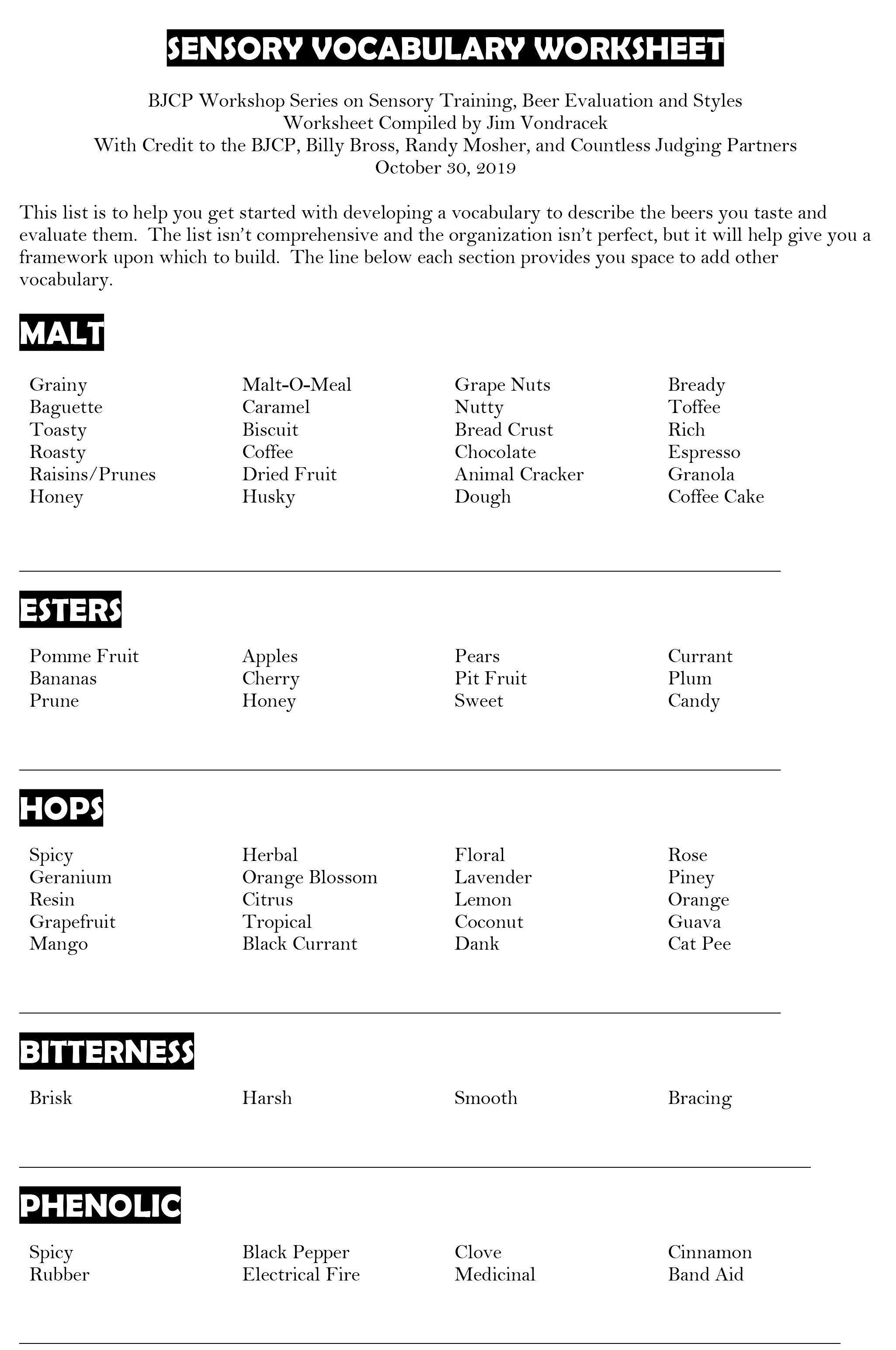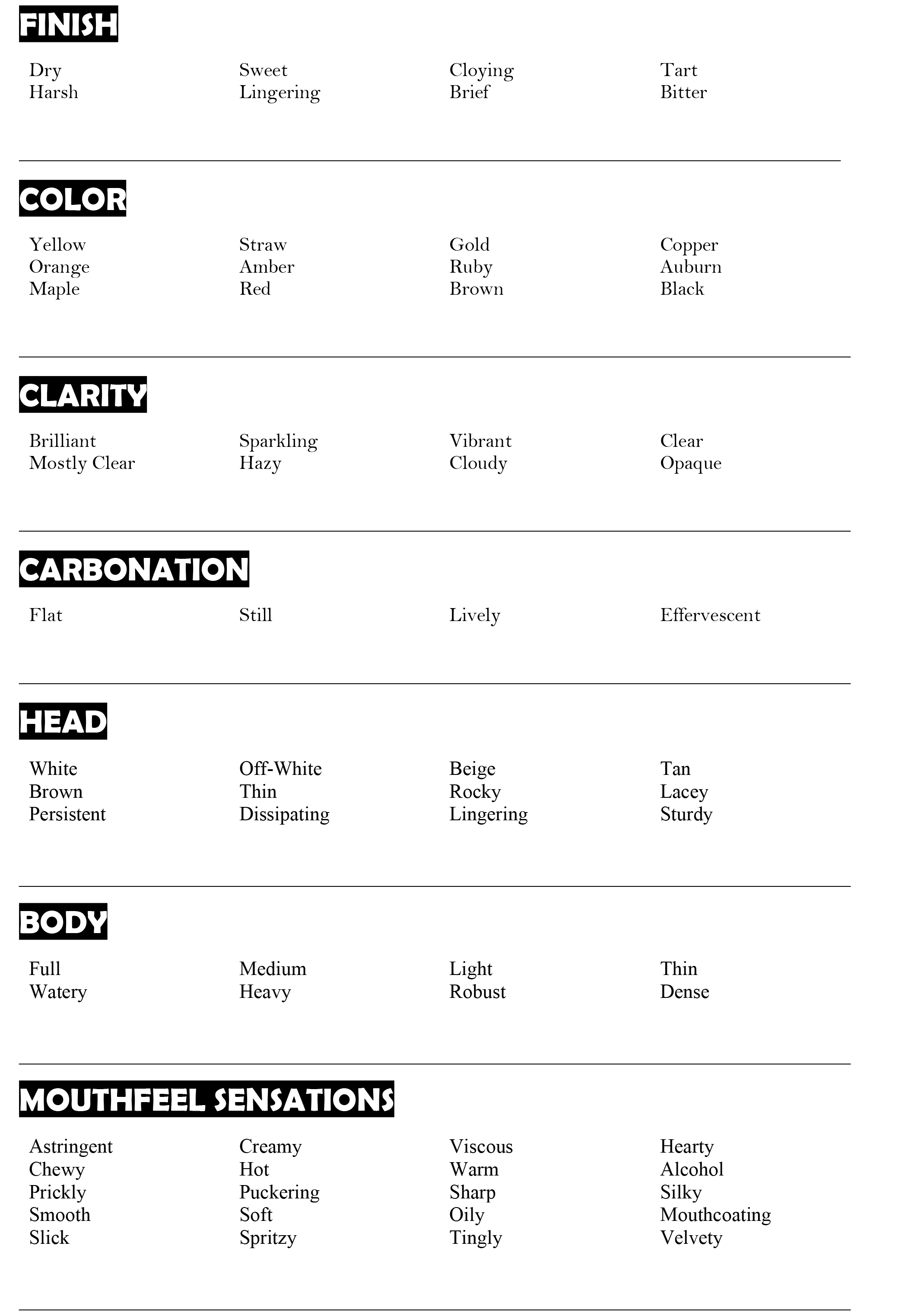A sensory vocabulary worksheet I compiled for the initial workshop in a six part series on sensory training, beer evaluation and styles. Or view it online here.










"Grape nuts", "Granola", "Malt-o-meal"??
Maybe culturally neutral descriptors would have been more appropriate?
A sensory vocabulary worksheet I compiled for the initial workshop in a six part series on sensory training, beer evaluation and styles. Or view it online here.
View attachment 650458
Speaking of thiols, I recently had a commercial beer that had strong aroma and flavor of onion and boiled vegetables with lighter notes of stinky feet and feces.
I think that takes "drain-pour" one step further: spit immediately and rinse well.
I would just point out that while that's a great list of descriptors, it's not all-inclusive. There's no way you could reasonably cover every possible flavor or sensory descriptor.A sensory vocabulary worksheet I compiled for the initial workshop in a six part series on sensory training, beer evaluation and styles. Or view it online here.
View attachment 650456
View attachment 650457
View attachment 650458
That does sound interesting. I recently made a strawberry rhubarb wheat, heavier on the rhubarb. I would call the taste tart, my friend used the word sour. Not sure how to differentiate the two words actually. Thanks for sharing the list, interesting to read.One example was someone was struggling with the difference between tart and sour.
Enter your email address to join: